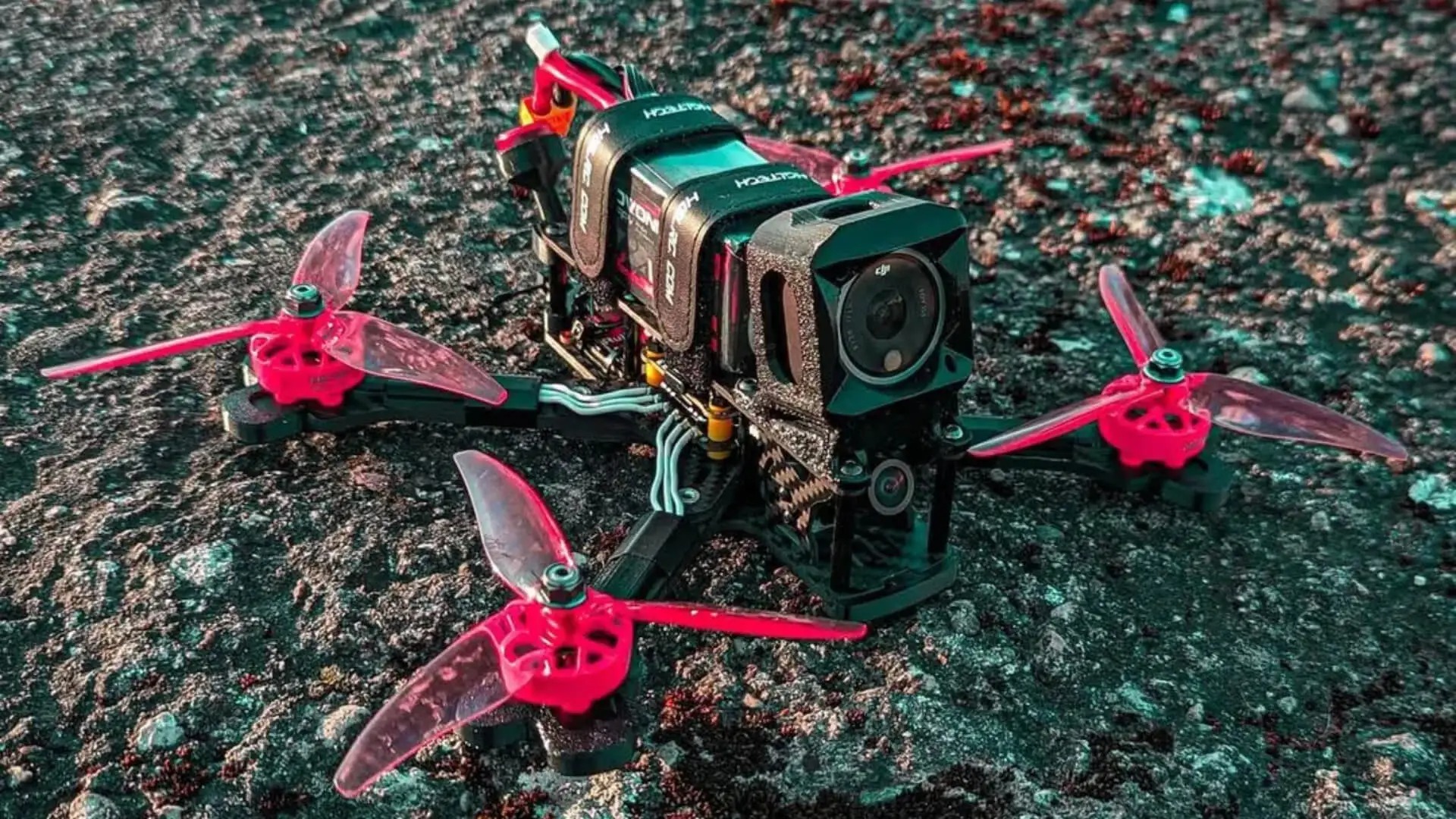FPV drones, short for First-Person View drones, have become an essential tool in various fields—ranging from cinematic content creation to competitive racing. At the heart of every powerful FPV build lies one of the most critical components: the FPV drone motor.
Whether you’re building your first quad or upgrading an existing rig, understanding how drone motors work—and what factors matter in performance—can greatly impact your flight experience. In this guide, we’ll break down the key specifications, types, and selection tips for FPV drone motors to help you make a more informed decision.
- What Is an FPV Drone Motor?
An FPV drone motor is a brushless motor that powers each propeller of the drone, enabling flight control through rapid RPM changes. These motors must deliver high efficiency, consistent thrust, and reliable durability, especially under demanding conditions such as freestyle stunts or high-speed races.
Each quadcopter typically uses four motors—each responsible for the thrust and torque at its corresponding arm. The power system’s responsiveness and overall efficiency largely depend on the characteristics of these motors.
- Key Specifications to Understand
When evaluating FPV motors, it’s helpful to look beyond just brand or size. Here are the primary specifications to consider:
2.1 Motor Size (e.g., 2306, 2207)
The number denotes stator width and height. For example, a 2306 motor has a 23mm wide and 6mm tall stator. Wider and taller stators generally provide more torque and power but may consume more current.
- Smaller motors (e.g., 1404) are often used for whoops or 3-inch builds.
- Mid-sized motors (e.g., 2207, 2306) are common for 5-inch freestyle drones.
- Larger motors (e.g., 2806.5) are used in long-range or cinematic rigs.
2.2 KV Rating
KV stands for RPM per volt. A 2300KV motor will spin at 23,000 RPM when powered by 10 volts (unloaded).
- High KV motors offer more RPM and faster response but often generate more heat and require smaller props or lower voltage.
- Low KV motors are better for stability and efficiency, especially in long-range flights.
2.3 Shaft and Prop Mounting
Shaft size and mounting patterns should match the props you plan to use. Most 5-inch drones use M5 shaft diameter with T-mount or standard bolt holes.
2.4 Weight and Efficiency
Lighter motors help reduce overall AUW (All-Up Weight), leading to better flight times and agility. However, ultra-light motors may compromise torque or cooling capacity.
- Where to buy
3.1 Discover MEPSKING: Your Premier One-Stop Shop for FPV Drone
MEPSKING is a leading online platform dedicated to FPV drone enthusiasts. As a trusted industry leader, MEPSKING bring you an extensive range of high-quality FPV drones and accessories, making it easier than ever to find everything you need for your next flight adventure.
At MEPSKING, we’ve partnered with top-tier brands like DJI, T-MOTOR, iFlight, BETAFPV, RunCam, CaddxFPV, RADIOMASTER, SpeedyBee and more to provide a wide selection of FPV essentials. From motors, ESCs, frames, and cameras to FPV goggles, controllers, and beyond, we’ve got you covered.
Plus, our exciting ongoing events make shopping even more rewarding:
- Spin the Lucky Wheel – Win exclusive prizes and discounts.
- Free Product Trials – Test our products at no cost.
- Social Media Events – Engage with us on our official channels for a chance to win.
3.2 Why Choose MEPSKING: Official Quality Assurance, More Affordable Prices
A Complete Product Range: We offer both variety and quality.
- All FPV Essentials in One Place: Find everything you need, from motors, ESCs, and flight controllers to goggles, antennas, and video transmitters.
- Top-Quality Selection: Partnering with leading brands, we curate the most popular and reliable products on the market. Every product undergoes professional testing by our team to ensure quality.
Dual Quality Assurance
- Brand Warranty: Enjoy coverage directly from the manufacturers.
- MEPSKING Support: Our professional after-sales service includes a two-year warranty on all orders, ensuring any quality issues are promptly addressed.
Unbeatable Prices
- Official Discounts: Take advantage of brand promotions.
- Exclusive MEPSKING Offers: Stack additional platform discounts on top of official deals for maximum savings.
Faster Delivery
We prioritize getting your products to you quickly so you can spend less time waiting and more time flying.
3.3 Don’t Miss Out on Free Trail at MEPSKING!
From the 16th to the 21st of every month, MEPSKING offers an exclusive Free Trial Program featuring different products each time. From motors and ESCs to flight controllers and more, you’ll have the chance to test premium FPV gear for free. Don’t wait—explore this month’s lineup and take your FPV experience to the next level!
- FPV Drone Motor Types by Use Case
There is no “best FPV motor” for all situations—your use case should drive your selection. Here are the common categories:
4.1 Freestyle Drones
These prioritize smooth throttle response, good mid-throttle control, and durability. A 2306 or 2207 motor with moderate KV (~1900–2100KV on 6S) is often preferred.
4.2 Racing Drones
In this high-speed niche, responsiveness is key. Smaller, higher KV motors such as 2205 or 2305 at 2500–2800KV on 4S/6S batteries provide aggressive punch and acceleration.
4.3 Cinematic Drones
Heavier drones that carry GoPro or stabilized cameras need motors with more torque and stability. Larger motors like 2506 or 2806.5 work well, paired with lower KV ratings for smooth, controlled movements.
4.4 Long-Range Builds
Efficiency and reliability come first. Pilots often select low-KV, larger-stator motors such as 2208–2806.5 to conserve battery over extended flights.
- Common Mistakes When Choosing FPV Drone Motors
Here are a few traps even experienced pilots fall into:
- Overpowering a lightweight frame: Too much torque can damage fragile frames or cause overheating.
- Mismatched battery and KV rating: Using high KV motors on a high-voltage battery can burn ESCs or shorten motor life.
- Ignoring motor efficiency: Not all motors are designed equally. Look at real-world test data like thrust tables when available.
- How to Choose the Right FPV Drone Motor for You
Here are a few tips:
- Define your use case first: Freestyle? Racing? Long-range?
- Match KV with battery voltage: E.g., 1800–2100KV for 6S, 2300–2700KV for 4S.
- Use motor comparison tools: Online motor testing databases can help you analyze thrust vs. efficiency vs. heat.
- Read user reviews and feedback: Pilot communities like Rotorbuilds or FPV forums offer real-world insights.
- Maintenance Tips for Long-lasting Motor Performance
Once you’ve chosen your motors, make sure to:
- Check for debris: After flights, especially in sandy or grassy areas.
- Avoid crashes into hard surfaces: Even if the motor spins, internal damage may exist.
- Re-lubricate bearings (if applicable): For long-term smoothness.
- Check motor bell play: Excessive movement can indicate wear.
- Future Trends in FPV Drone Motors
In 2025 and beyond, we’re likely to see motors with:
- Improved heat dissipation through better bell and stator material
- Lighter builds with the same torque output
- Integration with smart ESCs for better monitoring
- AI-assisted tuning profiles to match your flying style
As battery tech and ESC firmware evolve, motor innovation will follow closely behind.
- Conclusion
Choosing the right FPV drone motor isn’t about grabbing the highest KV or most expensive brand—it’s about balance. Performance, efficiency, weight, and durability must align with your flight goals.
By understanding the core specifications and aligning them with your specific drone build, you can maximize both enjoyment and efficiency.
Stay in touch to get more updates & alerts on Baddieshub! Thank you




